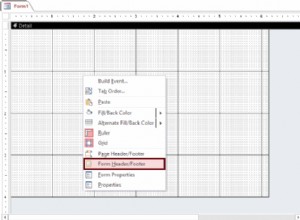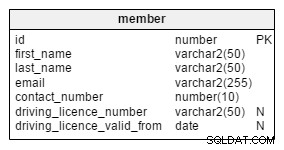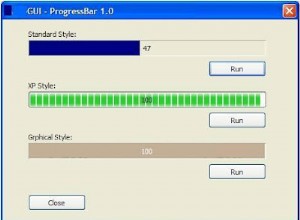Spędziłem trochę czasu i wreszcie wymyśliłem działające rozwiązanie.
Opublikuję go tutaj do wykorzystania w przyszłości.
Rozwiązanie
Przede wszystkim masz trzy tabele (foo_table , bar_table , baz_table ), które wskazują na Twoich users tabela za pomocą kluczy obcych (o nazwie user_id we wszystkich przypadkach). Będziesz musiał zastąpić identyfikatory przechowywane w tych kolumnach z id na another_id . Oto jak możesz to zrobić:
-- We are dropping the foreign key constraint on dependant table (in other case it will prevent us from updating the values)
ALTER TABLE foo_table DROP CONSTRAINT fk_e52ffdeea76ed395;
-- Then, we're swapping values in foreign key column from id to another_id
UPDATE foo_table T SET user_id = (SELECT another_id FROM users WHERE id = T.user_id);
-- And finally we're creating new foreign key constraint pointing to the another_id instead of id
ALTER TABLE foo_table ADD CONSTRAINT fk_e52ffdeea76ed395 FOREIGN KEY (user_id) REFERENCES users (another_id) ON DELETE CASCADE;
Będziesz musiał powtórzyć powyższe zapytania dla każdej tabeli zależnej.
Następnie wszystkie zależne tabele będą wskazywać na Twój nowy another_id kolumna.
Na koniec wystarczy wymienić klucz podstawowy:
-- 1. Dropping the original primary key
ALTER TABLE users DROP CONSTRAINT users_pkey
-- 2. Renaming existing index for another_id (optional)
ALTER INDEX uniq_1483a5e93414710b RENAME TO users_pkey
-- 3. Creating new primary key using existing index for another_id
ALTER TABLE users ADD PRIMARY KEY USING INDEX users_pkey
-- 4. Creating index for old id column (optional)
CREATE UNIQUE INDEX users_id ON users (id)
-- 5. You can drop the original sequence generator if you won't need it
DROP SEQUENCE users_id_seq
Możesz nawet upuścić oryginalny id kolumnę, jeśli chcesz.
Mam nadzieję, że komuś pomoże.




